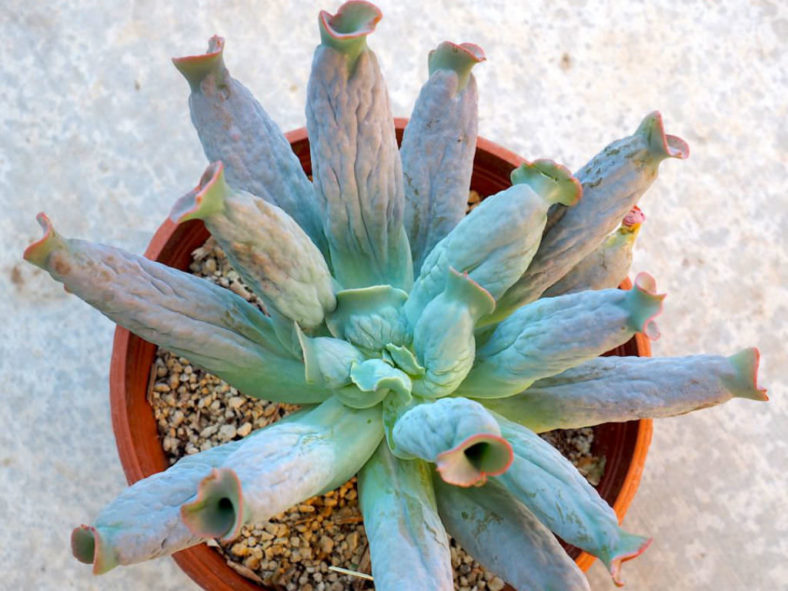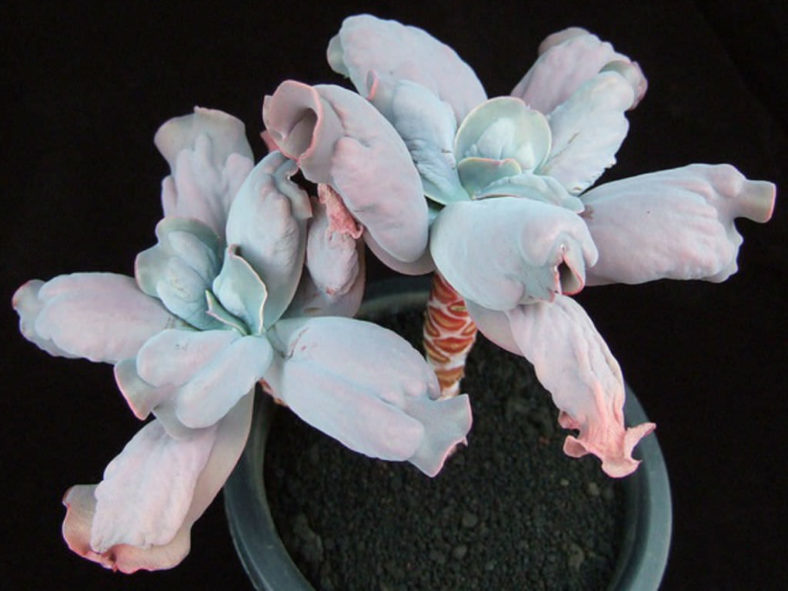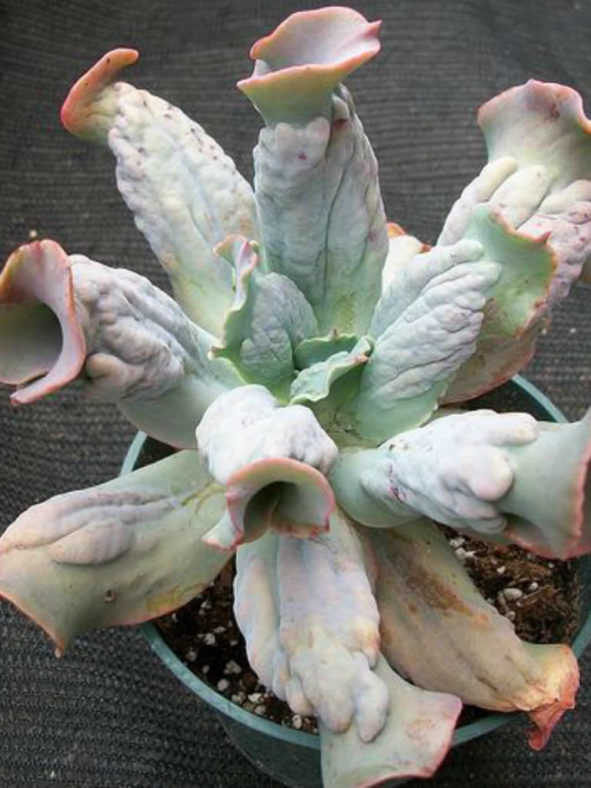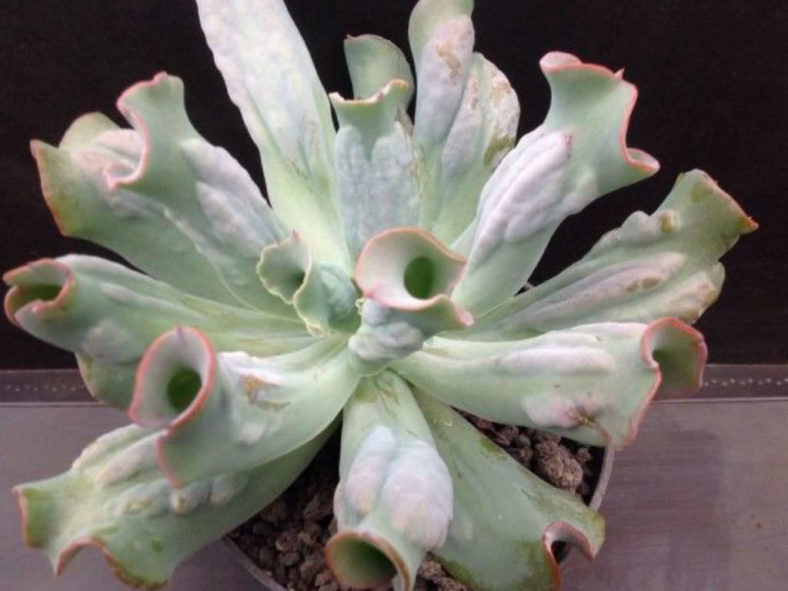Scientific Name
Echeveria 'Culibra'
Synonym(s)
Echeveria 'Culebra'
Scientific Classification
Family: Crassulaceae
Subfamily: Sempervivoideae
Tribe: Sedeae
Genus: Echeveria
Origin
Echeveria 'Culibra' is a hybrid created by Dick Wright in 1980. The parentage is unknown.
Description
Echeveria 'Culibra', also known as Echeveria 'Culebra', is an odd succulent that forms rosettes of powdery, pale blue-green leaves with long, raised caruncles on the upper surface and pink wavy margins. The rosettes can reach a diameter of 8 inches (20 cm). In time, the caruncle causes the leaf to curl downward at the margins, resulting in a tubular leaf that reminds one of a cobra arched to strike.
The pink flowers are bell-shaped and appear on tall, branched, leafy stalks in spring.

Hardiness
USDA hardiness zones 9a to 11b: from 20°F (−6.7°C) to 50°F (10°C).
How to Grow and Care
Most common Echeveria species are not complicated succulents to grow, provided you follow a few basic rules. First, be careful never to let water sit in the rosette, as it can cause rot or fungal diseases that will kill the plant. Additionally, remove dead leaves from the bottom of the plant as it grows. These dead leaves provide a haven for pests, and Echeverias are susceptible to mealybugs. As with all succulents, careful watering habits and plenty of light will help ensure success.
Repot as needed, preferably during the warm season. To repot a succulent, ensure the soil is dry before repotting, then gently remove the pot. Knock away the old soil from the roots, and remove any rotted or dead roots. Treat any cuts with a fungicide.
Most Echeverias can be easily propagated from leaf cuttings, although a few are better from seeds or stem cuttings. To propagate a leaf cutting, place the individual leaf in potting soil for succulents and cover the dish until the new plant sprouts.
Learn more at How to Grow and Care for Echeveria.
Links
- Back to genus Echeveria
- Succupedia: Browse succulents by Scientific Name, Common Name, Genus, Family, USDA Hardiness Zone, Origin, or cacti by Genus
Photo Gallery
Click on a photo to see a larger version.


